McALLEN, Texas—Hard on the Mexican border, stretching from Roma to Brownsville at Texas’s southernmost tip, the Rio Grande Valley takes in mile after mile of dusty ranches, citrus groves, and sugar cane fields. Still an important center of agriculture—most of the nation’s grapefruit is grown here—it also has been changing steadily since the arrival of the maquiladoras, the border factories built to take advantage of tariff-free zones. The economy now increasingly depends on other industries: health care, education, retail, shipping, aerospace, construction of a liquified natural gas pipeline, trucking, and lately, border control. The population of the valley has exploded from 325,000 in 1969 to 1.3 million today.
All this makes the Rio Grande Valley the fastest-growing area of an economically booming state, subject to all of the pains that come with it. It’s not just the threats to farms and wildlife—or the fact that the interstate, crowded with trucks and cluttered with billboards, backs up like Los Angeles during rush hour. The region’s biggest challenge is to prepare its residents for skilled jobs that are cropping up faster than they can be filled.
That education challenge is a heavy lift for any fast-developing region, but it’s particularly acute in a place where the distances are so vast, the heritage so rural, and the people so poor. Fully 86 percent of valley residents are considered economically disadvantaged. Add to these barriers the fact that the region is 90 percent Hispanic, and that until recently education resources have been limited. “We have had a brain drain because of access to higher education,” said Javier Salinas, an assistant director of undergraduate admissions at the University of Texas Rio Grande Valley in Brownsville.
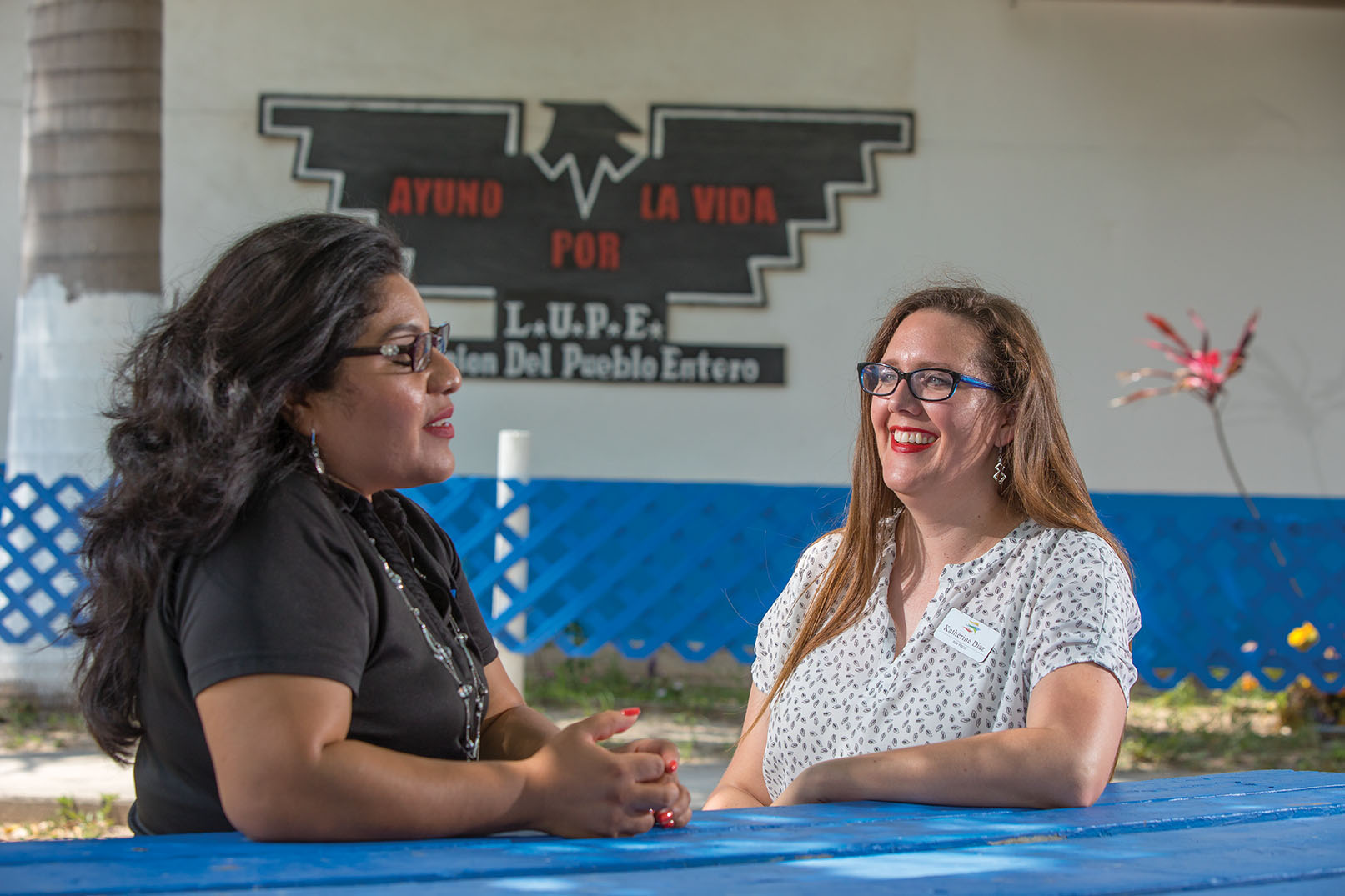
Despite these hurdles, this distant corner of the Lone Star State is by some measures a model of educational progress among low-income, Latino groups. The Rio Grande Valley accounts for half of student enrollment in the state’s high-performing, high-poverty districts. Eighty-eight percent of the students attend a district rated A or B by the state, and 92 percent graduate from high school. Students here are outperforming their statewide peers in third-grade reading and eighth-grade math. And more valley students—60 percent—enrolled in postsecondary programs within a year of high school graduation than did Texas students overall.
“There is definitely a can-do attitude here, an attitude of ‘why not us?’” said Katherine Diaz, deputy director of RGV FOCUS, a partnership that works to improve college readiness, access and success.
And yet, a discouragingly small group of students in the valley—just 7 percent—score high enough on the ACT or SAT to be considered ready for college. And when they do go to college, their completion rates are even lower than the state’s poor rates overall. Only 19 percent of valley residents between ages 25 and 64 hold at least an associate degree, compared with 38 percent for Texas and 42 percent nationally. Most notably, a third of the region’s working-age residents never finished high school. In Texas overall, that figure is 15 percent; nationally, it’s just 11 percent.
The partners and allies of RGV FOCUS are working to radically improve those numbers, attending to every section of the educational pipeline in a collaborative way. With 146,216 adults between the ages of 18 and 24—and over one-third of them struggling to some extent with English—the partners are concentrating on getting more of the valley’s young people into and through college-level programs. The approach is comprehensive, and it starts with efforts to help students finish high school and be better prepared for college. The group also works to make college more accessible and more focused on ensuring student success. Local colleges are better aligning their curricula with workforce needs and offering deeper support for students. That support includes basics such as transportation, food, and English language lessons, and it also features intensive advising about academic pathways, schedules, and financial aid.
Young and striving
Compared with those of most rural areas, the valley’s population is exceptionally young; the median age is 30. And unlike many rural areas, the young people stay: 75 percent of recent high school graduates who go on to college enroll at one of the institutions in the valley. Recent efforts are catering to the traditional college-age population in two specific ways: 1.) by re-engaging graduates who earned college credit through dual-enrollment programs while in high school, and 2.) by targeting students who could benefit from so-called “reverse transfer”—that is, awarding them associate degrees while they pursue their bachelor’s.

The four-county effort brings together K-12 schools, community groups, and three colleges: the University of Texas Rio Grande Valley (UTRGV), a four-year university that evolved from other institutions and was established in 2015; and Texas Southmost College and South Texas College, both community colleges. UTRGV also recently opened the first medical school in the region. “Now instead of having to go to Austin, Houston, or Dallas, students can stay here,” Salinas said. “The theme is: ‘We grow our own,’” added Michael Aldape, director of special programs at UTRGV.
For students at Texas Southmost, staying here can mean simply moving their studies across the road, to UTRGV, where they now enjoy automatic transfer providing they have at least a 2.0 GPA. That’s the plan for second-year Texas Southmost students Dania Duarte, 20, and Ariel Hernandez, 20, who are both student mentors for the college. In the part-time job, they visit local high schools to show students the college ropes, helping them with registration, financial aid and the like. The value of higher education is a proposition many of these students don’t immediately grasp, according to Duarte and Hernandez.
“They just want to get a job right after high school and make money,” Hernandez said. “They don’t have the encouragement they need.” She and her Texas Southmost classmate understand—because they’ve been there.
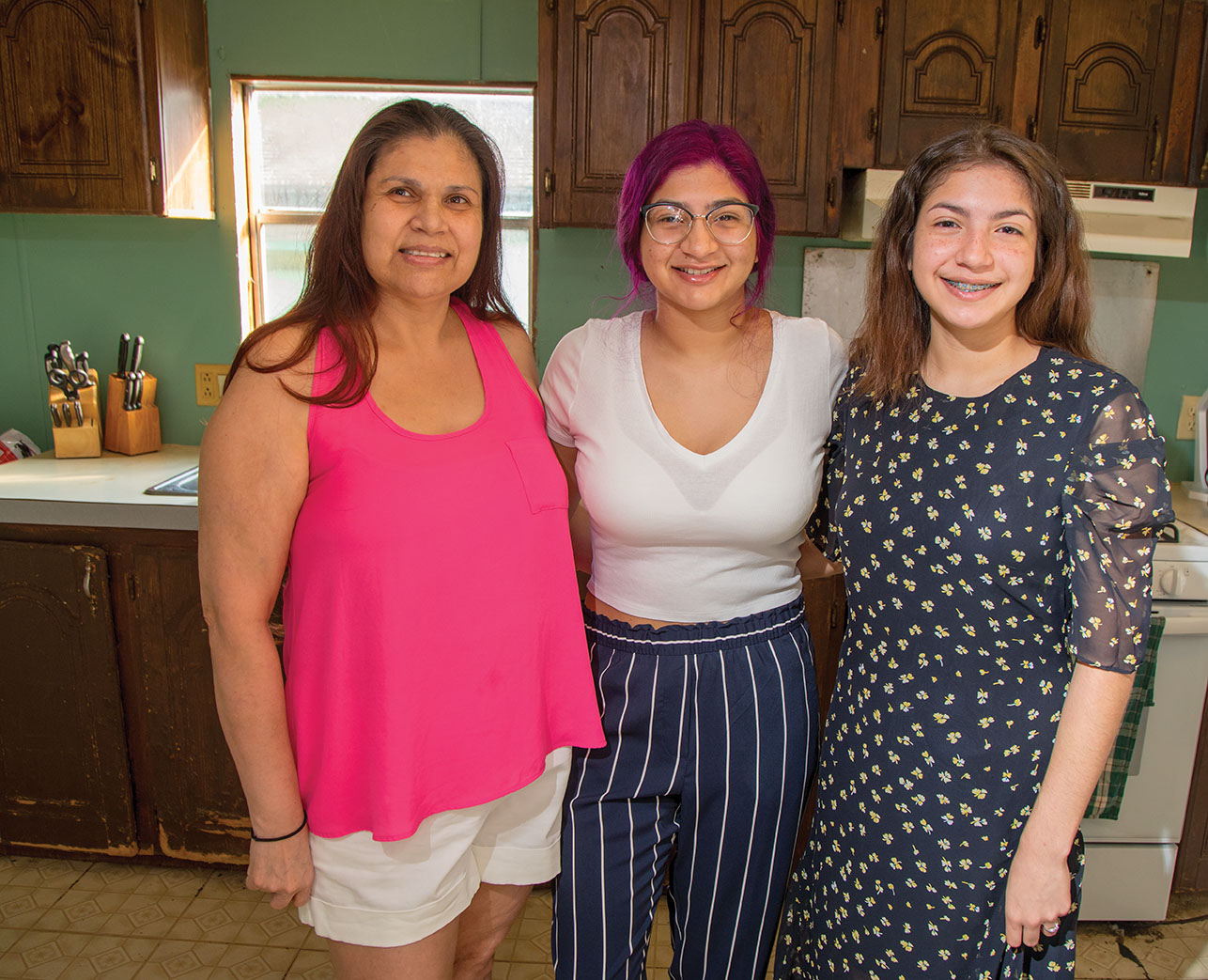
“Honestly I didn’t think I could go to college,” said Duarte. “We never had any money. Nobody ever said ‘Hey, you need to do this.’ It was more me doing it for myself.” After college, Hernandez, a criminal justice major, aims to be a game warden. Duarte, who will major in English at UTRGV, has set her sights on teaching.
About 300,000 residents of the Rio Grande Valley live in the grim settlements known as colonias, unincorporated communities developed by unscrupulous landowners in the 1960s when Mexican workers were first brought over to fill agricultural jobs. Today these immigrants, some documented and some not, continue to live in truck-sized, patched-up motor homes or flimsy shacks sitting on grassless lots along unpaved roads. The colonias often lack streetlights and proper sewer systems. Internet access is slow, spotty, and sometimes nonexistent. These deprivations, and others, combine to make everyday life quite difficult—and the path to a good education almost impossibly steep.
When the rain comes, as it does often in these flood-prone lands, the dirt roads of the colonias turn to mud and worse: If students can get to school at all, they may be walking to the bus with plastic bags on their feet, or even floating to the bus stop. “Even if you have transportation, you may be canoeing out of your home,” said Tania Chavez of La Union del Pueblo Entero, a nonprofit that serves this population.
The lack of internet access is educationally crippling—even for students lucky enough to have laptops. To snag free Wi-Fi connections, students regularly sit in school parking lots or squat at tables in fast-food joints whose managers are kind enough not to insist on a purchase.
Higher education has not always opened its arms to undocumented students. Although many of these students have lived in the United States for most of their lives, they often have fewer rights than students coming here on visas. They are not legally able to work or obtain federal financial aid, though, in Texas, they are eligible for state aid and, at many colleges, private aid. Until recently these restrictions have discouraged about half of all undocumented students from going to college.
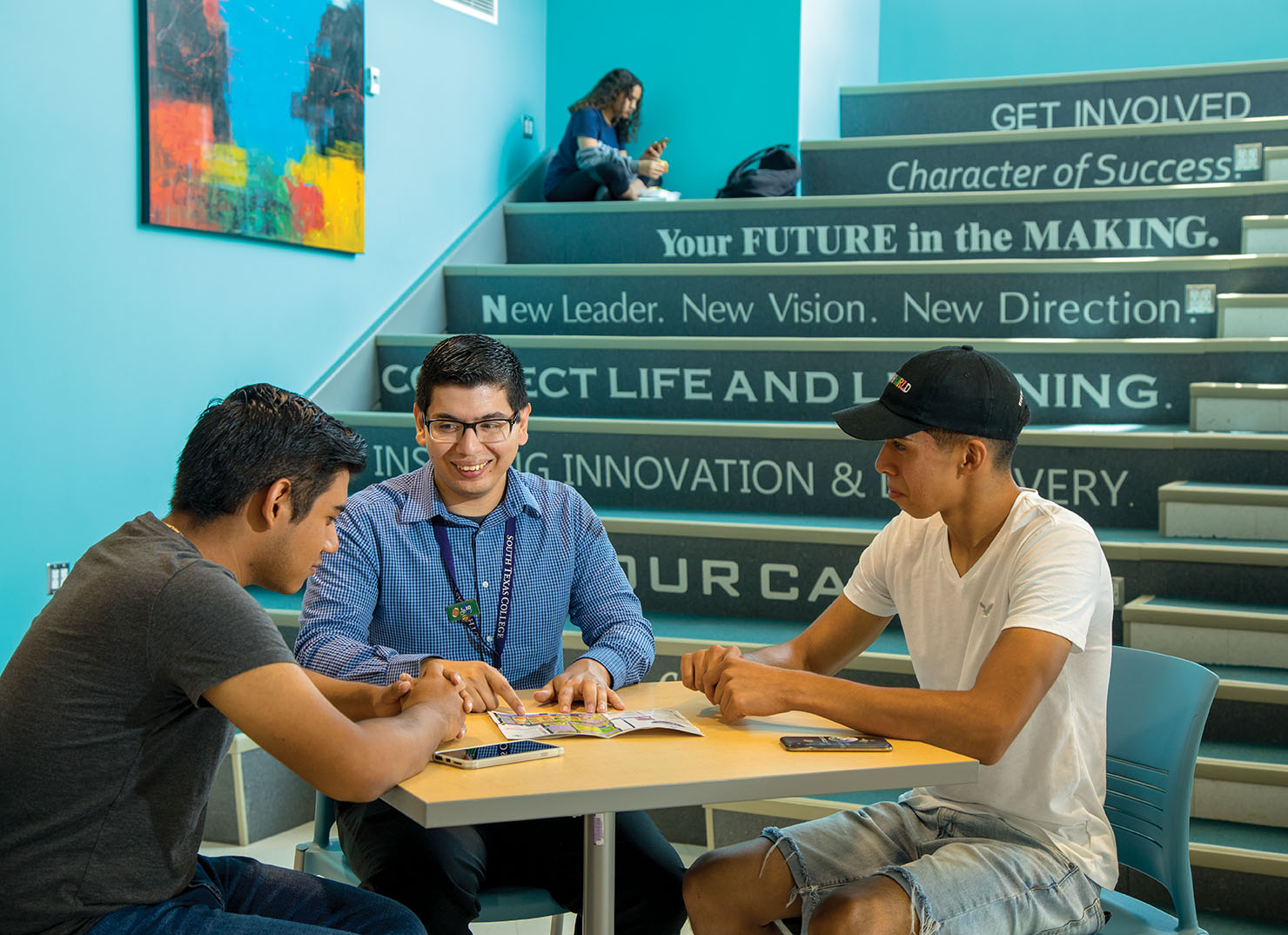
That doesn’t mean they don’t want to—or that their parents discourage them. “It’s a myth that Latino families don’t value higher education,” Diaz said. “I have absolutely never heard that in the valley.” But many immigrant families have a different perspective—one usually not informed by family college experience—and family ties are especially tight. So as the colleges have improved and formalized their efforts to support student success, they also are improving communication with parents. “Going to college is a family affair,” said Debbie Gilchrist, who directs the student service centers at UTRGV. “We help the parents understand degree plans and financial aid. These are parents who haven’t seen colleges. We want to be a community resource, not an ivory tower.”
These efforts reach down to K-12 as well. Even at the middle school level, parents need to understand how the state’s graduation requirements are changing to better align with colleges and careers. They need to see why it’s important for their children to take advanced math and four years of English no matter where they’re headed later. “We want all students to be prepared for college. Taking Algebra II and English IV helps them do that,” Diaz said. “We want their education to be more rigorous no matter what.”
A big boost to students in the valley has been the option of dual enrollment, an increasingly popular arrangement in which students earn college credit as juniors or seniors in high school. More than 20 percent of the state’s dual-credit courses are completed in the Rio Grande Valley. At some valley high schools, one of every four students earns an associate degree before graduation. In the fall of 2018, higher education institutions in the valley enrolled more than 15,000 high school students in dual-credit courses.
Students choose dual enrollment because it works. In a recent study of dual enrollment in the University of Texas System, researchers found that students’ exposure to just one dual-credit course—such as English, college algebra, or political science—significantly improves their chances for success in college. The courses are free, and unlike Advanced Placement or International Baccalaureate courses, students are required only to pass the course, not score well on a test, to earn the credit. Moreover, many schools in poor areas don’t even offer AP or IB courses.
Straight outta ‘Calcutta’
Humberto Perez, 25, grew up in Las Milpas, a colonia (now part of the town of Pharr) that the Associated Press once called “Calcutta on the Rio Grande.” Perez, who came over from Mexico when he was 2 years old, said the label fit. “It was definitely the other side of the tracks,” he recalled. “There was a lot of drugs, gang activity, crime.” Undocumented, Perez worked to help support the family as soon as he was able. He got a job at a taqueria, being paid off the books because he didn’t have a work permit. He also served as the family translator, reading the monthly bills to let his parents know how long they could go without paying them. “I never believed I could go to college,” he said. “There was no money for that.”
But when Perez was in high school, he took classes at South Texas College through the dual-enrollment program. “I saw it as an opportunity to at least get an education even if I couldn’t go to college,” he said. He graduated from high school with good grades and an associate degree. “My main goal was to get my family out of their situation,” he said. But he also knew he wanted the kind of job that would require a bachelor’s degree. “Otherwise I’d be working at an import-export facility where you peel the cactuses or arrange the oranges for shipping.”
By then protected by the federal Deferred Action for Childhood Arrivals program, Perez was awarded a generous merit scholarship to Texas A&M University.
He also continued to help support his family back home.
“I felt a lot of guilt that I was there and they were still here,” he said. After graduation, he returned to the valley, and is now working as an admissions counselor at South Texas College in McAllen.
Perez’s personal experience, and his work with undocumented students, give him an informed perspective on the current political climate regarding higher education and immigration. “Students are scared,” he said. “They are scared because they don’t know who to trust. They need assistance, but they’re afraid to ask. They need to work, but they have to work under the table. Many of these students feel there is no point in going to college if they can’t work afterward.”
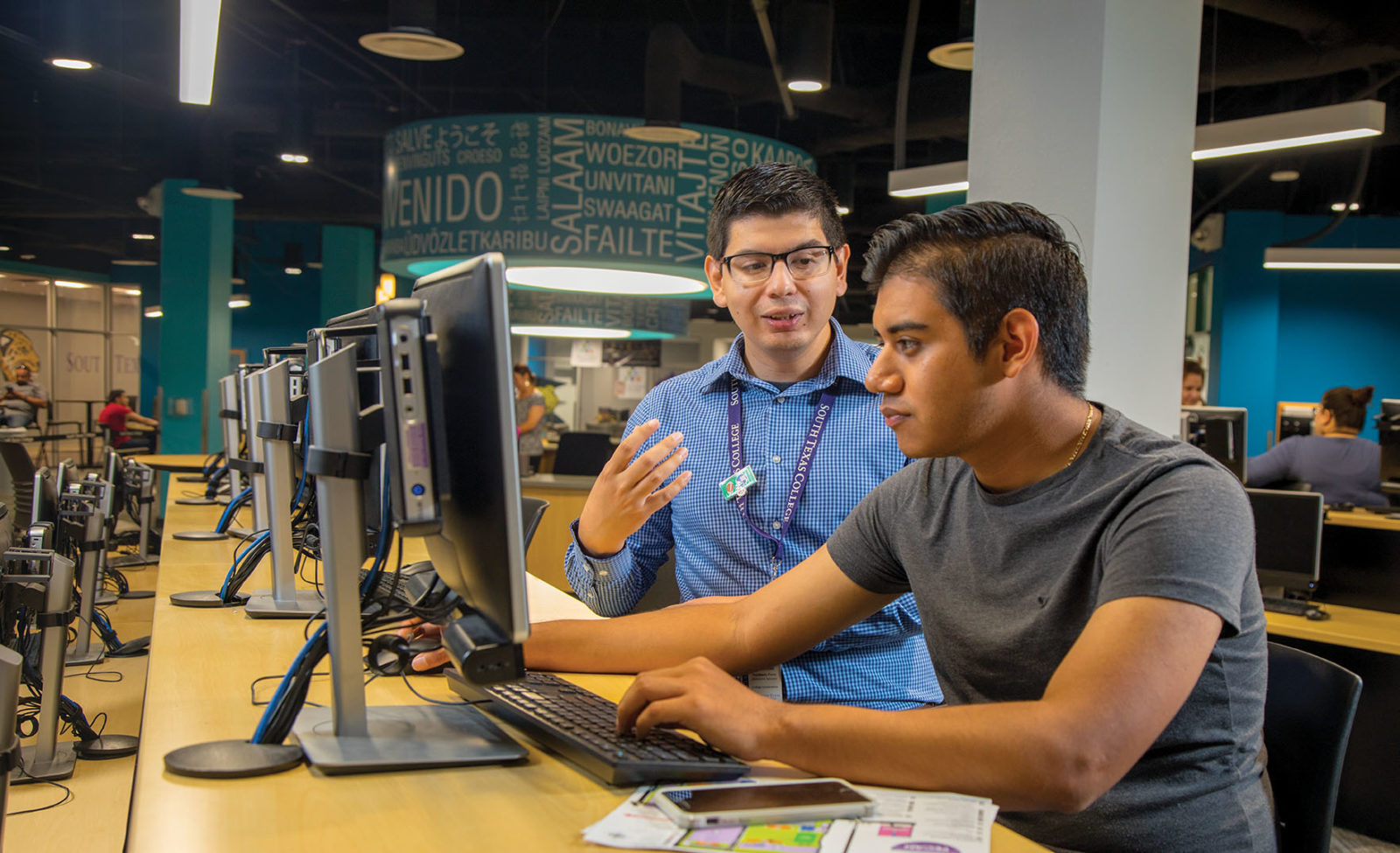
Perez cited a student who wanted to study at South Texas College to become an emergency medical technician. But he was worried he couldn’t get certified. “They can go up north and work on the oil rigs, and make $15 to $20 an hour, but we want them to have something better to fall back on.”
The Texas College and Careers Readiness School Models Network is building pathways to those better opportunities. It’s a network of Texas STEM academies, early-college high schools, technology-oriented high schools and industry-cluster academies that prepare students for careers in fields such as aerospace, petroleum refining, manufacturing and energy. Led by the Texas Education Agency and Educate Texas, these initiatives help historically underserved students, like those here in the valley, earn dual credits while pursuing paths to in-demand jobs.
Among the participating high schools is Lyford, which serves 475 students in a dusty farming town many miles from city services. Although half of its virtually all-Latino student population is deemed at risk of dropping out, and although 80 percent are considered economically disadvantaged, the school’s on-time graduation rate exceeds 95 percent. Still, students’ average SAT and ACT scores, along with their Advanced Placement passage rate, are well below the state average. Lyford is working to improve students’ college readiness, at the same time making its curriculum more relevant to STEM-related and other careers. The school has done that by introducing practicums—in technology, law, and agricultural science, among others—in which seniors spend a chunk of their day working hands-on with local firms and the school district itself.
Woman with a wrench
One of the students who followed the practicum route is Destiny Gomez, 18, who on this day has her head under the hood of a school bus. The daughter of a single mother, Gomez spent part of her childhood helping her grandfather, who also worked in the school transportation department. “He was always working with tractors and cars, and he usually had me there doing tasks and he’d show me how to do it on my own,” Gomez said. “He said the field was so male-dominated and that people would try to scam us because we were girls and they assumed we didn’t know what we were doing.”
At Lyford, Gomez took classes in the morning, then headed off to the transportation garage in the afternoon, where she and three other students learned how to repair small engines, working their way up to diesels and other mechanical parts. She also developed a passion for welding. Barely 5 feet tall, Gomez admits she had trouble reaching the equipment. But she says she wanted to be a role model for women. “The men always told us we were too small to carry our weight,” she said, “but I wanted to prove them wrong.”
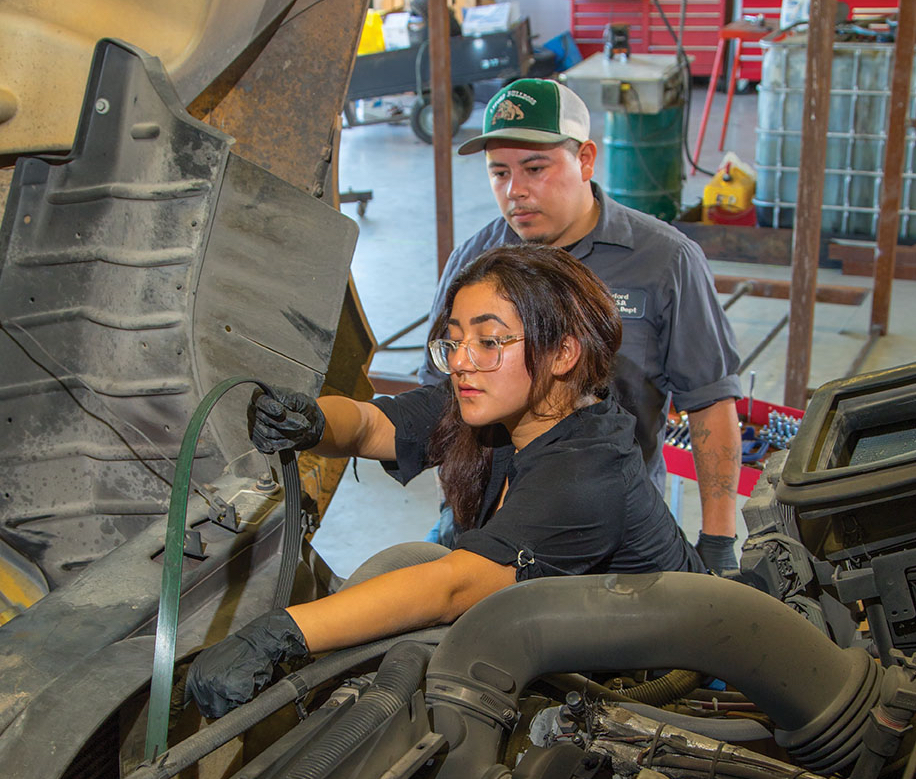
In September, Gomez will enroll at Universal Technical Institute in Irving, a for-profit training school with a high rating from the federal government. She hopes to become certified in welding, and then enlist in the Navy, after which she believes she’ll be set for a secure career. “I would not have laid out my future if it weren’t for this (program),” Gomez said. “I would never have realized what I loved to do.”
When it comes to educational achievement, the Rio Grande Valley has a long way to go. But its trajectory is trending upward. If progress continues on its current path, 74 percent of eighth-graders will be reading at grade level by 2025—more than double the number today. The percentage of high school graduates scoring “above criterion” on the SAT and ACT, just 5.4 percent in 2012, will nearly double by 2025. And by 2025 the region will see a doubling in the percentage of students taking dual-enrollment or AP courses to 64 percent.
As to college attainment, the valley has set a highly ambitious goal (the same as the state’s): to have 60 percent of its 25- to 34-year-olds earn a certificate or degree by 2030. In its K-12 districts, the region is already playing an outsized role in helping the state of Texas close the achievement gap between white and Latino students. It now looks to replicate and improve on those gains at the college level.
